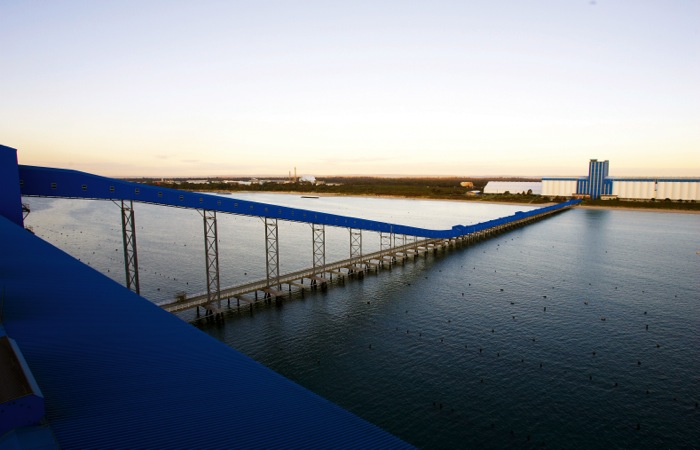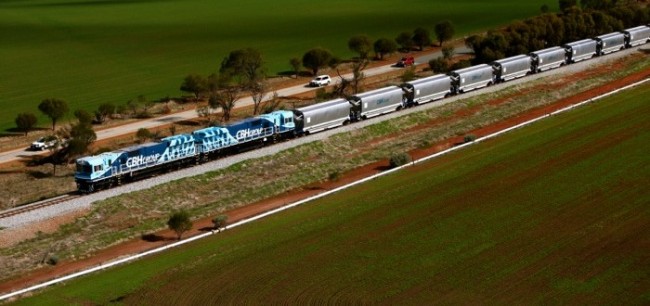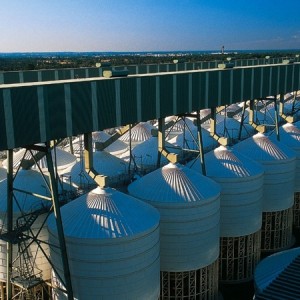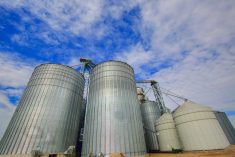Given the demise of the prairie pools and the recent sales of a number of Canada’s new-generation co-operative grain terminals, it would be understandable if many Canadian farmers, grain traders, farm advisers and policy makers believe co-operative grain marketing ventures are simply not viable in today’s world.
Just don’t try and tell that to Western Australian farmers.
Their Commodity Bulk Handling Group (CBH) is now the largest co-operative in Australia. It receives and stores 90 per cent of the grain produced in Western Australia at 197 receiving sites, and it has 100 per cent ownership of and operates all four of the region’s port terminals.
Read Also

It doesn’t have to be the end for your farm
Options for farmers without successors to pass on the farm.
CBH provides growers a total of 20 MMT of storage capacity even though Western Australia only produces an average 10.3 MMT of grains annually. CBH has also captured over 50 per cent market share of Western Australia bulk exports of grain, and is the largest grain exporter in the country.
Most remarkably, CBH is solely owned and controlled by 4,200 Western Australia farmers.
These farmer-stakeholders have even expanded CBH into railroading through its own fleet of rolling stock and locomotives. CBH has also created value-adding opportunities through their wholly owned subsidiary Lupin Foods Australia, by a joint venture with Hudson Shipping Lines to create Australian Bulk Stevedoring, and through Daily Grain, which is the leading price discovery and management service in Western Australia.
CBH not only markets and exports commodities, it even processes Western Australia grains internationally through their 50 per cent ownership of Interflour, which operates seven flour mills in Indonesia, Vietnam, Malaysia and Turkey.
In total, Western Australia farmers oversee an agricultural marketing co-operative that now has over C$2 billion in assets.
Remarkably, CBH started humbly in 1933, much like Canadian grain co-operatives. According to Brianna Peake, CBH government and industry relations manager, “The CBH storage and handling network was built by the growers of Western Australia starting in the 1930s when the price of bags became greater than the price of the wheat that went in them. The growers came together collectively to store wheat in bulk, and reinvested their profits back into the infrastructure, sowing the seeds for the storage and handling network model we have today.”
While Canadian grain co-operatives sought to increase revenues for members, however, CBH focused on reducing its members’ costs. Cheap, efficient up-country storage was the co-operative’s cornerstone, and the focus on reducing costs has continued as CBH expanded into rail transport, port terminals, shipping, marketing, exporting, and processing.
As a result, average post-farmgate costs for CBH members are 15 per cent lower than for Australian farmers who rely on multinational corporations like GrainCorp, Glencore/Viterra, and Cargill for storage, movement, marketing and export of grains.
The lower costs enjoyed CBH members translate into higher net crop returns.
To see the impact of working to control costs, we only need to compare rail freight rates. While Western Canadian farmers have been frustrated by continually rising rail freight rates, in the 2013 CBH annual report CBH Chairman Neil Wandel noted: “During the 2012-13 harvest, CBH reduced rail freight rates by an average of seven percent, providing real value back to growers from the investment in rail.”
Peake concludes: “CBH offers storage and handling and transport services at significantly lower rates than other Australian bulk handlers as we are not driven by shareholder profits but by value to our grower members in low fees and efficient services.”
Across the Pacific
There are a number of other notable differences between CBH and the defunct Western Canadian co-operatives. “CBH does not pay dividends to growers,” Peake points out. “The CBH rebate system is a patronage-based system, based on a grower delivering to the CBH system and the following year receiving a rebate on charges due to the volume of business they have done with the co-operative.”
While this patronage rebate system may seem similar to the Canadian experience, a much greater percentage of the co-operative revenues are reinvested in CBH rather than distributed back to the members. “When CBH Operations develops their budget and sets their charges, they factor into this a minimum return of A$85 million per annum to be spent on capital and maintenance works across the network each year,” Peake says. “In high-volume years, this increases significantly and over the last five years CBH has invested more than A$500 million back into the storage and handling network.”
Another difference is that membership in CBH is strictly limited to active farmers. Before becoming a member, a farmer must have delivered over 600 tonnes of grain to CBH within a three-year period. Once this minimum is met, the farmer will be offered the opportunity to buy one share for A$2. If the farmer fails to continue to deliver this amount of grain over a three-year period, that $2 is redeemed and that farmer ceases to be a member.
Also, there is no retention of earnings held in a shareholder’s name by the co-operative, and no payment to shareholders to reflect any increase in value of the co-operative over the time a farmer was a member.
Instead of offering growers higher prices and/ or retention and subsequent payments reflecting any increase in value of the co-operative, the CBH model strives to reduce costs, increase efficiency and promote sustainability. In reality, it is a long-term growth plan for Australian crop production.
The most important difference is the attitude Western Australia farmers have to grain marketing, co-operatives and particularly CBH.
“… in Western Australia, based on grower survey results, the loyalty for doing business with CBH is at an all-time high of 88 per cent. Many growers have a good understanding of the competition in global grain markets and that they are competing in these markets with growers who have significantly lower supply-chain costs and subsidy assistance from their governments,” says Peake. “The majority of Western Australia growers understand that ownership and control of their supply chain is critical to keeping their costs as low as possible and driving efficiencies that they would not be able to recognize on their own. This is a main driver for retaining CBH as a co-operative with the growers as its sole focus.”
Dr. Andrew Crane, the co-operative’s CEO, summed up the role of CBH in their 2013 annual report: “The CBH Group exists to create and return value to growers and to do that over the long term. CBH has a key role to play in ensuring the sustainability of the Australian grain industry. The best way we can deliver this is helping growers run their own integrated supply chain to Asia, ensuring they can be competitive against other origins and other business models that return less value to the farm gate.”
What can we learn?
I found the co-operative which Western Australia farmers built to be not only efficient and successful but also exciting and inspiring. It has left me wondering if there is any way we could rebuild a co-operative grain marketing system in Canada. But Peake reminds me that building up the CBH Group has taken over 80 years, and has benefited from the continual reinvestment of much of the cost savings the system has generated back into the co-operative.
In other words, Canadian farmers would need to find billions of dollars to build such a system overnight.
Then it occurred to me that we may not be starting from zero. Farmers have already built much of the up-country storage that CBH provides Australian farmers, although it is privately owned and on-farm rather than part of the co-operative.
We already have a few short-line railroad co-operatives as well as producer loading car sites across the Prairies which give us access to the rail system. Farmers should still have interest in the large fleet of rail rolling stock bought by the federal and provincial governments as well as the Canadian Wheat Board (CWB).
And the CWB, regardless of what you thought of the single desk, was very successful at developing international markets and creating a highly respected Canadian brand for our crops.
By 2017 the wheat board must be privatized. Could it become a co-operative modelled after CBH?
Would Western Canadian farmers in particular be willing to forego higher prices in exchange for a lower cost system? After the fiasco of last year with all the shipping problems and the poorest basis levels ever, are farmers willing to at least consider a co-operative alternative to the present grain marketing system dominated by a few multinational players?
Do farmers now have the attitude needed to build a new grain system for the benefit of western Canadian farmers? Can farmers find the expertise that could manage grain held in onfarm storage and market that grain through a co-operative system without immediately having to spend billions on additional country storage?
Fortunately, we are not at the financial cliff that farmers faced back in the ’30s when they created CBH, the pools in Canada, and even the CWB. But since Canadian farmers are still enjoying relative prosperity, I question if Western Canadian farmers would buy into the CBH model, even though its performance is head and shoulders above its Australian competitors.
Perhaps our best bet for an alternative marketing system is if CBH would either partner with or even purchase the CWB. A partnership or even a sale of the CWB to a friendly low-cost competitor might be more beneficial to Canadian farmers than seeing the CWB sold to profit-seeking stakeholders of a multinational grain company which is likely already sourcing grain from our competitors.


















